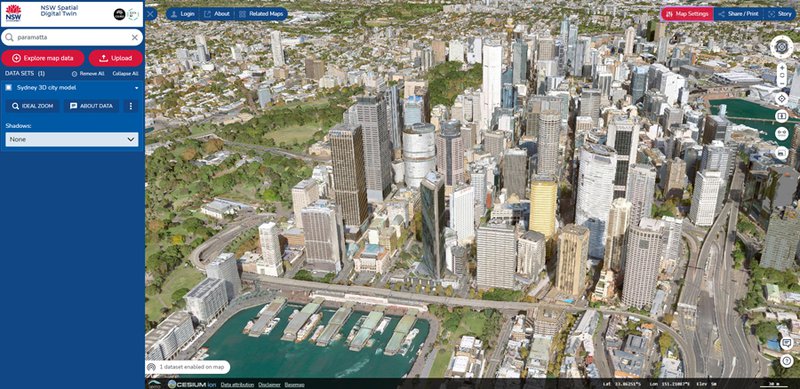Data has become its own type of infrastructure, and the NSW Spatial Digital Twin is an asset that will benefit private industries, government, and the public for years. The project has set a standard for how digital twins will be made and used for planning and visualisation.
The 2020 NSW Spatial Digital Twin is part of the Western Sydney City Deal partnership that brought together federal, state, and local government under a set of 38 commitments. The Digital Twin was part of the project’s commitment to coordinating information that supports planning and broader liveability targets.
The NSW Spatial Digital Twin incorporates the largest 3D modelling project ever undertaken, with the final product including 2,110 square miles (3,396 km2) of seamless 3D mesh captured at under 6 cm pixel resolution across the greater Western Sydney region.
We were responsible for the capture and processing of the necessary 3D data to underpin the NSW Spatial Digital Twin. It took several months of capturing, processing, and combining the imagery for an area so large.
What makes the NSW Spatial Digital Twin so remarkable is its open-source presentation, publicly accessible through a browser-based web portal. That foundational information source brings compounding efficiency benefits as government, private industry, and the general public can all refer to a central and consistent data source.
“The high availability of aggregated data will help with planning future development. Using the digital twin, we can model where we put the roads, hospitals, schools, etc. with precision planning like we’ve never done before. This is truly transformational technology and the best thing about it is that it’s open source – industry can use it, councils can use it, everybody can get involved and build this asset together for all of us.” -Victor Dominello, NSW Customer Service Minister

Open source 3D mesh data reduces costs and time frames for infrastructure planning regardless of the project size. Every project stakeholder uses the same validated source, making duplicate data investments unnecessary. 3D visualization gives all stakeholders a more tangible and dynamic sense of space. Users can see and understand space and how the change will impact it.

We used fixed-wing platforms carrying an array of image sensors to capture an area so large at such high detail, and over such a long period of time. Aeroplanes were the ideal tool for the job, but it’s an intricate task when the busy Sydney Airport is within the capture zone. The post-processing task matched the capture process for complexity and scope. Our processing team had to turn 1.1 million images, adding up to 28,500 gigapixels of visual data, into usable 3D tiles for Data61 to build into the web portal.
“To have over 3,000 square kilometres of 3D data on a site that is available to anybody anytime shows that we as an industry and we as a country are leading the way globally with delivering spatial information to those that need it.” - Rob Clout, 3D Sales Manager, Aerometrex
NSW’s Spatial Digital Twin shows the value in making open source assets. They encourage and accelerate economic activity through centralised and consistent data. The concept of Digital Twins has already progressed past the proof-of-concept phase and to a mature product.
Jurisdictions of all sizes are investing in digital twin asset creation because the returns on investment are substantial. Better spatial data improves the multitudes of activities that involve the alteration of structures and space.